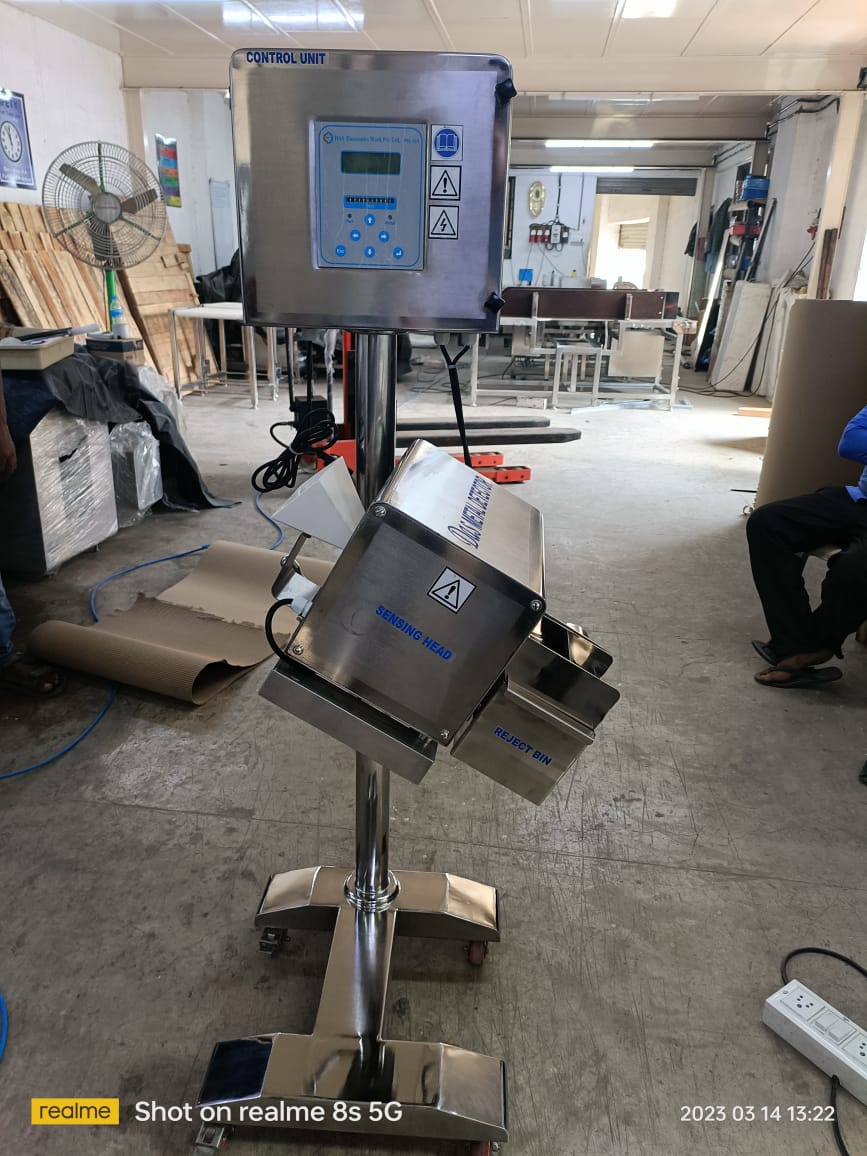
Metal contamination in goods or packages is found using tablet metal detectors in the food and pharmaceutical sectors. Due to the existence of metallic pieces or components in ferrous, non-ferrous, or stainless steel materials, metal contamination may happen in food and pharmaceutical items.
The identification of such metal contamination is crucial, and great precision and reliability are desired in the detection procedure. Consequently, a metal detector is crucial for maintaining the security of the goods. Additionally, metal detectors safeguard machinery and control compliance in the food and pharmaceutical sectors. Tablet metal detectors also contribute significantly to upholding the company's image.
In the pharmaceutical sector, there is a chance that magnetic or non-magnetic metallic pieces will contaminate the goods. This results from the use of various process equipment, such as reactors, agitated and storage vessels, classifiers, dryers, pumps, valves, pipes, etc. in the synthesis, processing, and storage; the majority of this equipment, pipes, valves, and pumps are made of metals.
This contamination also results from contaminated ingredients, mixing-process errors, and machinery failures. For instance, combinations comprising potassium, chromium, copper, aluminium, and other metals are employed in large-scale dehydrogenation operations. Nickel, cobalt, platinum, palladium, and other metals are also utilised.
These are many metal detectors with distinct functioning principles. Below, some of the more popular metal detectors are mentioned.
- Measuring electromagnetic induction
These metal detectors function according to electromagnetic induction theory. One or more inductor coils are employed in metal detectors to interact with metallic components on food or drug goods. The detector's construction ensures that the metal components from tablets are automatically removed without halting manufacturing. This kind of metal detector is typically used to find metal contamination during the production of continuous tablets.
This kind of tablet metal detector is simple to maintain and works well with all tablet presses. It is highly sensitive to all metals, including the most challenging stainless steel that isn't magnetic. Throughout its lifespan, its performance is maintained consistently.
- Receiving and transmitting on many frequencies :
This kind of tablet metal detector operates on a multi-frequency transmission and reception basis. For the transmission and reception of many frequencies in metal detection, multi-coil configurations are employed. The signal that the receiver sees is enhanced by the multi-frequency produced by the multi-coil configuration. Multi-coil configurations can increase the instrument's detection performance by up to 20% when compared to a single transmitter and two receivers.
The key standards for pharmaceutical sector products are quality and integrity. Whether it is for generic alternatives, over-the-counter solid dose products, or ethical pharmaceutical formulations, effective product protection is essential throughout the manufacturing and packaging processes in the food and pharmaceutical sectors.
- Electromagnetic waves :
A transmitter antenna in radiofrequency metal detectors generates radiofrequency waves between 300 kHz and 1 MHz. On either side of the transmitter, two reception antennas are placed at an equal distance from the emitter. The difference between the two signals is zero when the system is balanced and there is nothing magnetic or conductive inside the metal detector's aperture, indicating that no metal is present. There is a visible imbalance produced when metal is present and moving through the detector. These three elements affect how accurate these metal detectors are.
- Measurement at a very low frequency :
The most widely used metal detectors operate under the Very Low Frequency (VLF) measuring principle. The energy is continuously pushed into the earth and pulled back up as a result. Any metallic or conductive item that gets in the way of the magnetic field is affected by it. Every time the metal detector passes over a conductive item, the receiving coil transmits an electric current. The frequency of the current is amplified and sent to the control box in this way, utilising metal detectors
With the use of VLF technology, metals may be found and their depths and various sorts of metals can be distinguished.
